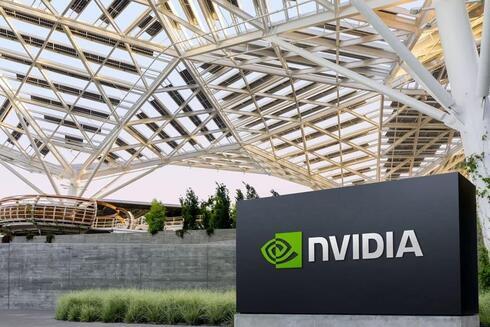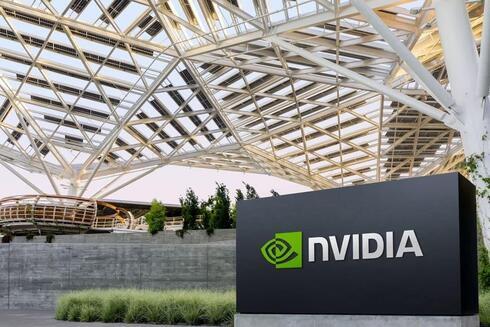
DeepSeek’s AI disruption looms over Nvidia earnings report
Wall Street watches closely as the Chinese firm’s breakthrough sparks fears of an AI chip shake-up.
Demand for Nvidia's high-end artificial intelligence chips will be in focus when the company reports its earnings on Wednesday, as investors weigh whether the recent rise of China’s DeepSeek signals a shift that could weaken Nvidia’s grip on the AI market.
Nvidia has been the biggest beneficiary of an AI-driven spending spree by major tech firms over the past two years, but DeepSeek’s low-cost AI models—comparable in performance to OpenAI’s ChatGPT yet requiring significantly less computing power—are raising concerns about the long-term necessity of Nvidia’s cutting-edge chips.
The Chinese AI company has taken the industry by storm. Its latest generative AI model, DeepSeek R1, was unveiled in January and has been described by prominent Silicon Valley investor Marc Andreessen as "one of the most amazing and impressive breakthroughs" in AI. Unlike most leading AI models, DeepSeek R1 is open-source, allowing anyone to inspect or use it without relying on DeepSeek itself. The model also stands out for its ability to run on significantly less advanced AI chips—posing a direct challenge to Nvidia’s dominance.
A shifting AI landscape?
DeepSeek’s rise coincided with Nvidia’s worst-ever single-day market loss, erasing $593 billion in value. Investors worry that if AI models no longer require Nvidia’s expensive hardware to deliver top-tier performance, the company’s dominance could erode.
"Investors have been very concerned about DeepSeek and the impact it will have on demand," said Ivana Delevska, chief investment officer at Spear Invest, which holds Nvidia shares in an actively managed exchange-traded fund. "So if Nvidia can still 'beat and raise,' it would be a positive signal for the stock."
Nvidia is expected to report a 72% year-over-year surge in revenue to $38.05 billion for the fourth quarter, according to LSEG data. However, this would mark its slowest growth in seven quarters. The company is also projected to forecast a 60% revenue increase for the first quarter ending in April.
So far, demand for Nvidia's AI chips remains strong. Major customers such as Microsoft and Meta have signaled that they will continue investing heavily in AI infrastructure.
"The CapEx plans communicated by Meta, Microsoft, Google, and Amazon paint a very positive picture of near-term demand for Nvidia," said John Belton, a portfolio manager at Gabelli Funds, which holds Nvidia shares.
The DeepSeek effect: Is Nvidia’s AI dominance at risk?
DeepSeek’s breakthrough stems, in part, from necessity. U.S. restrictions on exporting advanced AI chips to China—implemented by the Biden administration—forced Chinese AI firms to innovate with less powerful hardware. Rather than relying on massive computational resources like OpenAI, DeepSeek’s researchers refined their model using reinforcement learning, a technique that mimics human learning through trial and error. This approach enabled them to train a high-performance AI model at a fraction of the usual cost—just $6 million, compared to the billions spent by OpenAI.
If this represents a genuine shift in AI model training, it could spell trouble not only for Nvidia but for other chipmakers hoping to gain ground in the market. The conventional wisdom has been that AI progress depends on ever-increasing computing power. Nvidia’s market dominance has been built on this assumption, with its high-performance chips becoming the backbone of nearly every AI system.
However, DeepSeek’s model suggests that massive AI computing infrastructure may not be as essential as once thought. If smaller companies can compete with OpenAI without needing Nvidia’s most advanced chips, it could disrupt Nvidia’s lucrative AI chip business.
Blackwell rollout and the road ahead
In the near term, Nvidia’s latest Blackwell series chips remain in high demand. Shipments of Blackwell accelerated in the fourth quarter, boosting revenue, though analysts expect the cost of ramping up production to squeeze Nvidia’s margins. Adjusted gross margin is projected to decline by more than three percentage points to 73.5% for the quarter.
With Blackwell, Nvidia is transitioning from selling individual chips to offering full AI computing systems, such as the GB200 NVL72, which integrates GPUs, CPUs, and networking hardware. However, this shift has added complexity to an already expensive and time-consuming production process. Taiwan’s TSMC, Nvidia’s primary chip manufacturer, has struggled to expand capacity for advanced packaging—a critical bottleneck in AI chip production.
Blackwell’s rollout was also initially hampered by design flaws and low chip yields, though Nvidia has since resolved those issues. The company previously stated that Blackwell would exceed its initial revenue projections of several billion dollars for the fourth quarter.
"Blackwell has been a complicated set of products to launch," said Gabelli’s Belton. "With the level of outperformance that investors have come to expect, Nvidia’s delivery this time may be more muted due to the complexities of the Blackwell rollout."
Uncertain future for AI hardware dominance
For now, Nvidia remains the undisputed leader in AI hardware, with demand from major tech firms still robust. However, DeepSeek’s rise raises questions about the long-term trajectory of the industry. If AI models can achieve high performance without relying on Nvidia’s most expensive chips, the current AI hardware arms race could shift dramatically.
It is still too early to say whether DeepSeek’s breakthrough will lead to lasting change. But if its training methods prove to be a scalable alternative, Nvidia and other chipmakers could find themselves facing a challenge they never anticipated—an AI revolution that doesn’t depend on their hardware.














